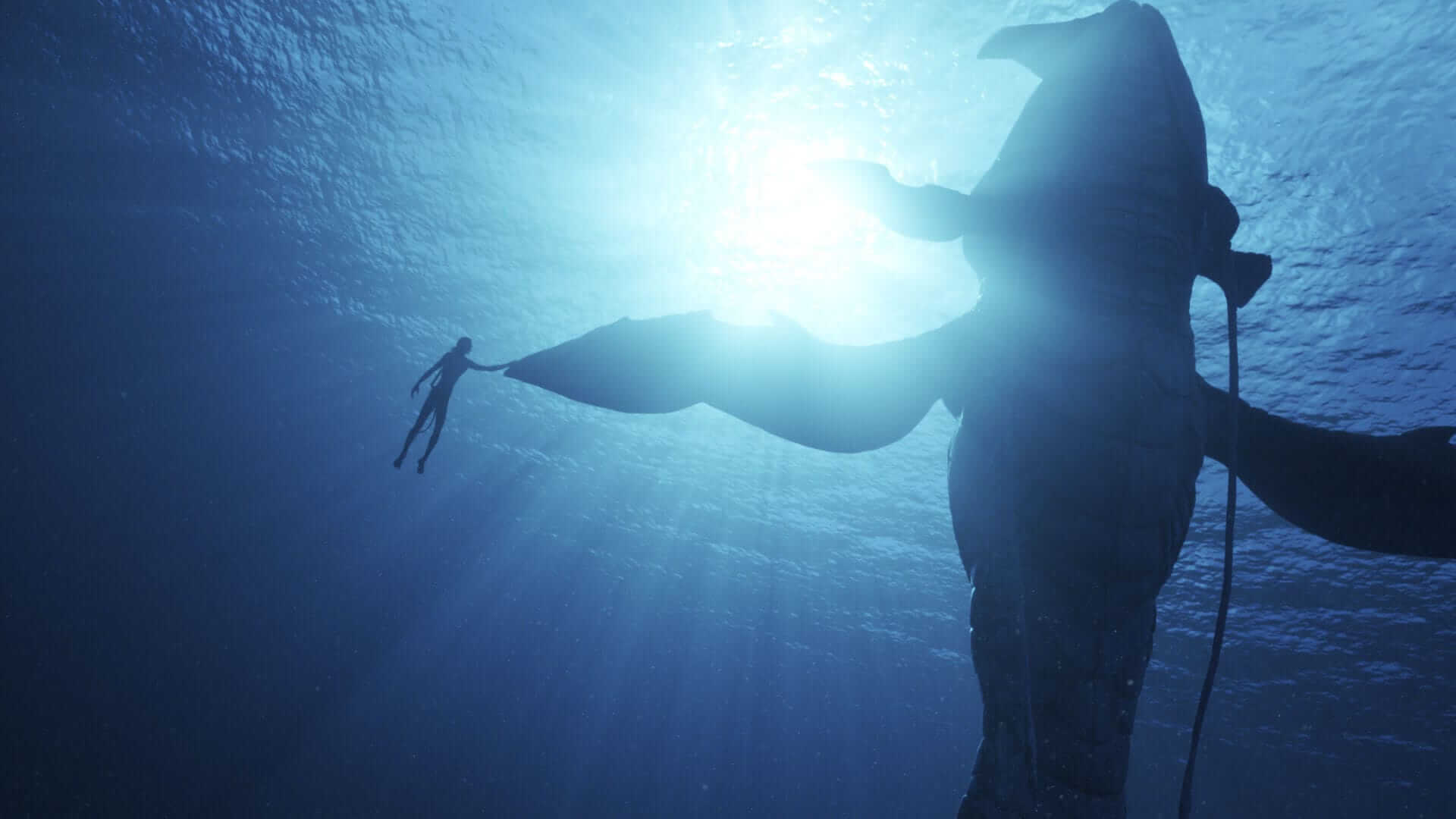Is there a biblical monster in ‘Avatar: The Way of Water’?
At the center of James Cameron’s sci-fi epic is a creature that looks a lot like a leviathan

Lo’ak swims with Payakan. Photo by ©Disney
The most arresting parts of Avatar: The Way of Water are less like a family drama, critique of military imperialism or action film and more like a nature documentary about a misunderstood leviathan.
The film picks up over a decade after Avatar. Jake Sully, the jarhead turned human-alien hybrid savior of the moon Pandora now has a family and spends his days sabotaging the supply lines of the “Sky People,” aka human colonizers. When an old enemy returns, the Sully clan find asylum among the Metkayina reef people.
There, Jake’s youngest son, Lo’ak, is almost swallowed whole by a massive sea predator. After nearly drowning, he is rescued by a tulkun, an even larger, whale-like creature with impenetrable scales — a bit like the biblical leviathan, who nearly swallowed the fish that gobbled down Jonah.
Lo’ak returns to the Metkayina village with news of his savior, but the elders are shaken by it. This tulkun, who is missing half a fin, is Payakan, and he is an outcast. He defied the sacred pacifism of his species and caused the deaths of a number of his kind. As a consequence, Payakan must live away from the pods and without a “spirit brother” from among the Metkayina. That is, until Lo’ak enters his mouth and establishes a neural link.
In the Bible and rabbinical texts, the leviathan, who rules the seas, was famously a loner. God killed his mate for fear their offspring would cause the end of the world. In Job we’re told of the fearsome sea beast, “No sword that overtakes him can prevail/ Nor spear, nor missile, nor lance./ He regards iron as straw,/ Bronze, as rotted wood./ No arrow can put him to flight;/ Slingstones turn into stubble for him.”
Payakan puts proof to this idea. In the third act climax, he thrashes billions of dollars’ worth of military and commercial whaling equipment, single-finnedly prompting a capsize after casually deflecting a projectile with the impenetrable plate on its head.
You can see why these creatures opted for pacifism — they know they’re too powerful, just like God realized when he killed the leviathan’s mate, opting to salt and save her for a feast at the messianic banquet instead.
There are clear differences between the tulkun and the singularly terrifying and far less friendly leviathan. The leviathan is much, much bigger and in some descriptions more serpentine or dragon-like. The tulkun are hunted for an enzyme in their brains said to suspend the aging process (adrenochrome ambergris, we might call it). The leviathan’s chief resource is its flesh, a dainty for the righteous at the dawn of the Messianic Age, and skin, which will cover the walls of Jerusalem at that time.
But given the depth of Cameron’s research, which draws from Aboriginal tradition, Joseph Campbell and his own oceanographic fixation, we can’t rule out a biblical influence. There is, in fact, a pivotal scene that seems to rearrange the angelic intervention during the binding of Isaac.
But, like the one before it, this installment of Avatar (itself named for a Hindu concept of incarnated deities) leans more heavily into other faith traditions. The sequel leaves a loose thread involving an ostensible virgin birth. Will that miracle child multiply loaves and fishes or walk on water? We’ll have to wait for Avatar 3 to see.
















